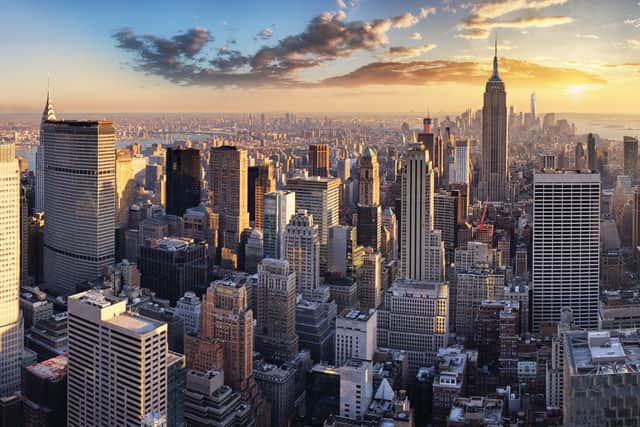Is New York City sinking? New research says skyscrapers are weighing down the Big Apple
and live on Freeview channel 276
What has cemented itself as one of the most remarkable and iconic skylines worldwide could end up being its downfall, as experts warn that New York City could be sinking.
That is according to a new study published by Earth's Future which notes that the 1.68 trillion-pound weight of its skyscrapers and other buildings is weighing down the Big Apple and could bring worsening flood risks. The new research which observes the city's subsidence rate - the speed of which something is sinking - was commandeered by three oceanologists from the University of Rhode Island and a researcher from the US Geological Survey.
Advertisement
Hide AdAdvertisement
Hide AdThey created geographic models to exhibit the downward pressure of heavy structures on the bedrock, clay, sand and silt underneath the region. Its findings reveal that the total weight New York City holds is causing it to sink about one to two millimetres per year on average.
While it may not seem like much, partnered with other outside influences and risks like rising sea levels, it notes that the rate could prove fatal long-term. Here are all the finer details you must know more about the study, This includes the parts of New York City most at risk of sinking, as well as a deep dive - pardon the pun - into the major risks it could cause.
What part of New York City is most at risk of sinking?


Researchers have claimed that the most at risk area of the Big Apple is Lower Manhattan which is renowned for being a veritable concrete jungle. It found that much of this part of New York currently sits only one to two metres above sea level.
Other areas like Brooklyn and Queens have also been highlighted for experiencing higher subsidence rates than other parts of the city.
What are the potential risks of New York City sinking?
Advertisement
Hide AdAdvertisement
Hide AdExplaining the major risk of New York City sinking, researchers explained: "New York faces significant challenges from flood hazard; the threat of sea level rise is 3 to 4 times higher than the global average along the Atlantic coast of North America. A deeply concentrated population of 8.4 million people faces varying degrees of hazard from inundation in New York City"
The region has already suffered mass floods in the past thanks to Hurricane Sandy in 2012, as well as Hurricane Ida in 2021 which led to the deaths of several people by drowning. The study pinpoints these major events as being catastrophic in negatively impacting the structural integrity of New York City's buildings, as salt water is known to corrode the reinforced steel and chemically weaken the concrete of building foundations.
Researchers claim that around 90% of the 67,400 buildings constructed post-Hurricane Sandy "have not been built to floodplain standards".
Tom Parsons, a geophysicist at the US Geological Survey and lead researcher of the study, told The Guardian: "It’s not something to panic about immediately but there’s this ongoing process that increases the risk of inundation from flooding. The softer the soil, the more compression there is from the buildings. It wasn’t a mistake to build such large buildings in New York but we’ve just got to keep in mind every time you build something there you push down the ground a little bit more".
Comment Guidelines
National World encourages reader discussion on our stories. User feedback, insights and back-and-forth exchanges add a rich layer of context to reporting. Please review our Community Guidelines before commenting.
